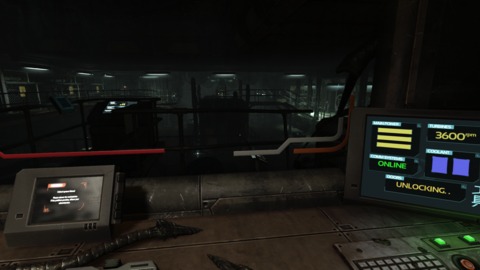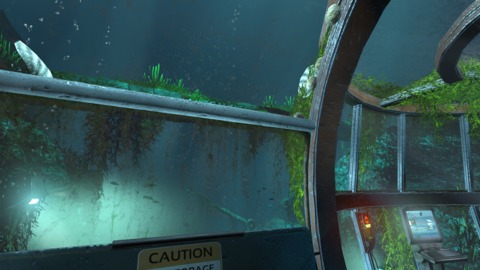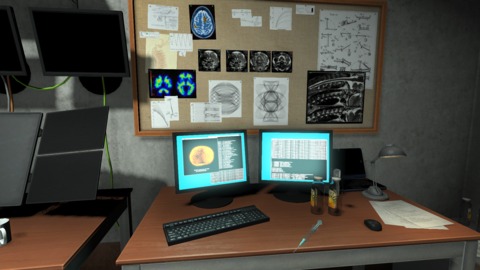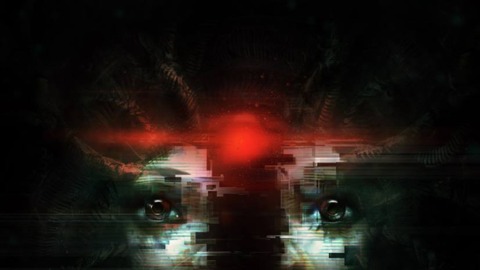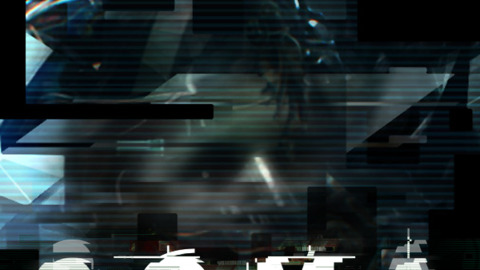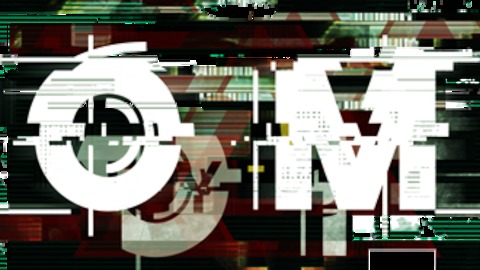Overview
SOMA is a horror title from Frictional Games, the developers of the Penumbra series and Amnesia: The Dark Descent.
Story
SOMA concerns itself with the fate of Simon, your every day guy that decides to undergo an experimental new treatment for his brain injury, only to wake up and find himself in a dreary underwater base where something has clearly gone very wrong. What has happened, where are you, and how do you get back from wherever "here" is - these questions and more will be what drives you forward.
Gameplay
Much like Amnesia before it, SOMA is a first person game with a minimal hud and a horror vibe. The crux of the gameplay revolves around exploring your surroundings and solving light environmental puzzles that impede your progress while also evading monstrous creatures that stalk the metallic hallways. There is no combat to speak of so most of your interactions with hostile creatures take on form of evasion and hiding. Unlike Amnesia there is no "insanity" meter of sorts, but enemy creatures will distort your vision in a similar albeit more futuristic fashion.
When not hiding from monsters the player will explore their surroundings and interact with various machines. All interactions are tied to a tactile system of operating and manipulating objects in a 1:1 fashion. While there aren't any real collectibles, it is possible to skip certain notes and data logs that help to further flesh out the world. SOMA doesn't have multiple endings in a classical sense, but the game does offer up certain situations with different choices along the way.
System Requirements
PC
| Minimum | Recommended |
|---|
- OS: 64-bit Windows 7
- Processor: Core i3 / AMD A6 2.4Ghz
- Memory: 4 GB RAM
- Graphics: NVIDIA GeForce GTX 260 / AMD Radeon HD 5750. OpenGL 3.3
- Hard Drive: 25 GB available space
- Additional Notes: Integrated Intel graphics are not supported. They should work (Intel HD 4000-series or better), but with issues.
| - OS: 64-bit Windows 7
- Processor: Core i5 / AMD FX 2.4Ghz
- Memory: 8 GB RAM
- Graphics: NVIDIA GeForce GTX 480 / AMD Radeon HD 5970. OpenGL 3.3
- Hard Drive: 25 GB available space
- Additional Notes: Integrated Intel graphics are not supported. They should work (Intel HD 4000-series or better), but with issues.
|
Mac
| Minimum | Recommended |
|---|
- OS: 64-bit 10.7
- Processor: Core i3 2.4Ghz
- Memory: 4 GB RAM
- Graphics: NVIDIA GeForce GTX 260 / AMD Radeon HD 5750. OpenGL 3.3
- Hard Drive: 25 GB available space
- Additional Notes: Integrated Intel graphics are not supported. They should work (Intel HD 4000-series or better), but with issues.
| - OS: 64-bit 10.7
- Processor: Core i5 2.4Ghz
- Memory: 8 GB RAM
- Graphics: NVIDIA GeForce GTX 480 / AMD Radeon HD 5970. OpenGL 3.3
- Hard Drive: 25 GB available space
- Additional Notes: Integrated Intel graphics are not supported. They should work (Intel HD 4000-series or better), but with issues.
|
Linux
| Minimum | Recommended |
|---|
- OS: 64-bit Major Linux distribution from 2014
- Processor: Core i3 / AMD A6 2.4Ghz
- Memory: 4 GB RAM
- Graphics: NVIDIA GeForce GTX 260 / AMD Radeon HD 5750. OpenGL 3.3
- Hard Drive: 25 GB available space
- Additional Notes: Proprietary drivers. Integrated Intel graphics are not supported. They should work (Intel HD 4000-series or better), but with issues.
| - OS: 64-bit Major Linux distribution from 2014
- Processor: Core i5 / AMD FX 2.4Ghz
- Memory: 8 GB RAM
- Graphics: NVIDIA GeForce GTX 480 / AMD Radeon HD 5970. OpenGL 3.3
- Hard Drive: 25 GB available space
- Additional Notes: Proprietary drivers. Integrated Intel graphics are not supported. They should work (Intel HD 4000-series or better), but with issues.
|

 Mac
Mac PC
PC Xbox One
Xbox One PlayStation 4
PlayStation 4 Linux
Linux